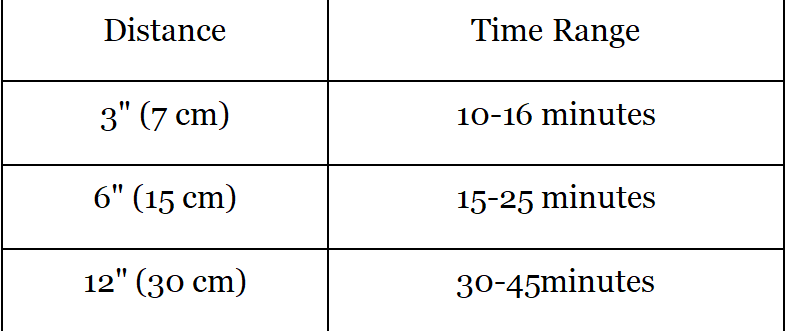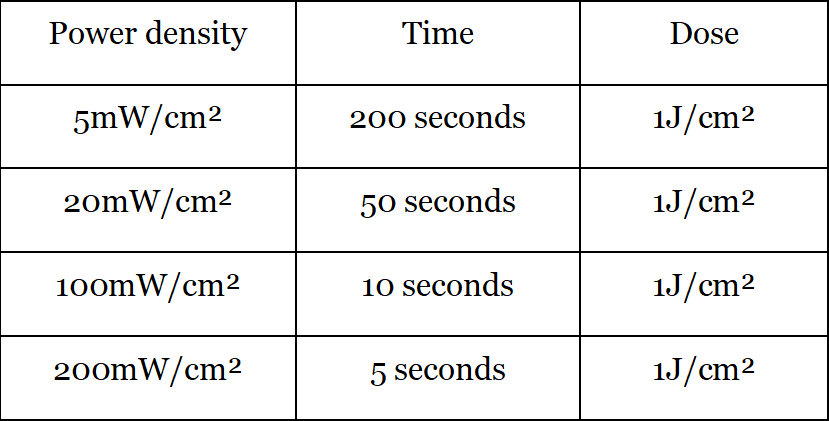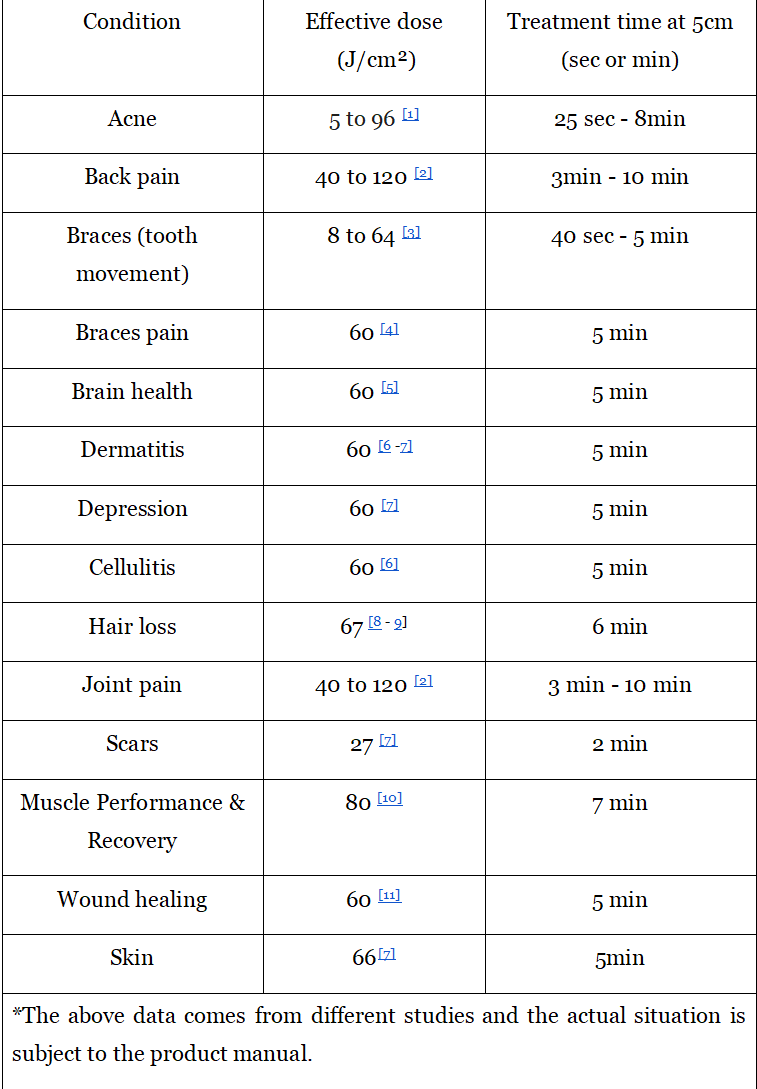Seattle, Washington, March 18, 2024 (GLOBE NEWSWIRE) -- In a groundbreaking effort to enhance the effectiveness of red light therapy, Bestqool, a leading provider of FDA class-II cleared red light therapy devices, has released an extensive dosing guide for users. This guide aims to demystify the complexities surrounding the application of red light therapy, helping users in determining the best dosage, duration and frequency for the conditions they want to treat.
Understanding the Science of Dosage
Red light therapy is applied to the body within the specific ranges of the wavelength 660 – 850 nm. It is interesting how the effectiveness of red light therapy can vary from person to person due to the intensity, duration and even difference in each individual's cellular response to the light. Some people prefer low-level lasers, while others rely on light therapy from LEDs. Depending on the type of light source, some people may see amazing results, while others may not notice anything at all.
The most frequent cause of this disparity is a lack of dosage knowledge. Knowing how strong your light is (at various distances) and how long to use it for are the first steps towards using light therapy successfully. Before you run out and buy the brightest light you can find and shine it on yourself for hours at a time, check what dosages scientists have found effective for treating specific conditions.
Introducing Some Important Terms
Before discussing the dosages used in red light therapy, here are some key terms that need to be covered:
1. Power intensity (or irradiance)
It is the amount of power delivered per square centimeter of body area per second, commonly expressed as mW/cm²/s (milliwatts per square cm).
2. Power density
Power density, which is commonly expressed as J/cm² (joules per square centimeter), is the product of power intensity and duration of exposure.
3. Total energy (dose)
It is the product of power density and exposed body area, typically given as J (joules).
Bestqool's comprehensive dosing guide provides actionable advice for users, including:
Getting the proper dosage of red light therapy is absolutely important. Many studies actually find no results from red light therapy when used incorrectly. To get the desired therapeutic results, it's necessary to adhere to appropriate dosing guidelines for users’ particular issue. Most studies suggest that a dose of between 2J/cm³ and 60J/cm² is optimal. Some important guidelines are:
Caution
- ● Be careful when applying the initial dosage on more sensitive areas.
- ● Avoid exceeding 180 joules of exposure per session (equivalent to 25-35 minutes of overall exposure at close range) on each area you intend to treat.
Treatment duration
- ● The duration of each session depends on your treatment objectives.
- ● The particular condition being treated and the power output of the device may affect the duration of the session.
Frequency
- ● Users must be consistent while receiving red light therapy.
- ● Users should start with a minimum of 2-3 sessions per week, then progressively increase as necessary.
- ● Sessions should be spaced out by at least six hours if more than one per day is required.
- ● Usersmight benefit from daily sessions or fewer sessions per week, depending on your goals. Research indicates anywhere from 2-14 sessions per week.
Monitor your Progress
- ● Monitor Users’ progress regularly and adjust according to requirements.
- ● Make a note of any changes or advancements in Users’ health.
- ● If needed, adjust the dosage depending on how Users’ body reacts to the therapy.
Distance from light
- ● It is advised to begin cautiously with shorter sessions at a specific distance.
- ● The closer Users are, their session will last shorter and cover a smaller surface area.
- ● If Users stand farther away, you can cover a greater area, but more time will be needed.
For superficial skin issues ( Pro300 as an example)
- ● Skin requires between 60-90 joules of red light therapy (660 nm) every session, which Users can obtain by doing the following:
- ● Users should place yourself between 3 and 12 inches away from the light if you're using red light for anti-aging or general skin health.
- ● To get the most benefit from more specialized therapeutic or medical uses such as healing wounds, scars and sores or promoting hair growth, Users should position themselves closer—between 3 and 6 inches.
For deeper issues( Pro300 as an example)
- ● Users need between 120-180 joules of near-infrared light (850nm) to treat deeper tissues like muscle, brain, bones, tendons, glands, fat, joints, fat, etc.
- ● The following rules should be adhered to:
- 3 inches away from red light: 25-35 min
- 6 inches away from the red light: 40-50 min
How to Calculate Light Therapy Dose?
The formula to calculate the dose of light therapy is:
Power Density x Time = Dose
The majority of recent studies describe their protocol in standardized units:
- ● Power Density expressed in milliwatts per square centimeter, or mW/cm²
- ● Time expressed in s (seconds)
- ● Dosage expressed in J/cm² (Joules per square centimeter)
Power density is the most important thing to understand for light therapy at home. Without it, users won't be able to determine how long to use your device to achieve a given dose. It is merely a measurement of the strength of the light (or the quantity of photons in an area of space).
The power densities used in light therapy studies are typically ~10mW/cm² to ~200mW/cm² at maximum. Dose simply tells users how long the power density was applied. Less time is needed for applications with higher light intensity.
The result in mJ/cm² is obtained by multiplying the mW/cm² and seconds units by 0.001 to obtain J/cm². Thus, the complete formula, accounting for standard units, is:
Dose = Power Density x time x 0.001
Specific Dosage Recommendations for Common Conditions
Now that you know how to calculate dosage let's see which dosages have been found to work well for treating various conditions. I'll also figure out how long each treatment session needs to get the necessary dosages for each of the three red light therapy devices.
The effective doses for various conditions are shown in the following table; they can range from as low as 0.1 J/cm² per session to as high as 700 J/cm² per session.
Conclusion
To sum up, red light therapy is an emerging and effective treatment method with a numerous advantage of safety, wide application, low trauma, high selectivity, and adjuvant treatment compared with traditional pharmacological drugs. More scientific research is under construction to unleash RLT's potential in health and wellness.
About Bestqool Red Light Therapy
Most of the RLT users are always in quest of high-quality red-light therapy devices, and this is especially true for Bestqool as they provide "An FDA class - II cleared, durable and versatile variety of RLT unique devices. You can choose red light devices that are compatible with your lifestyle and health status. Definitely, you will never regret spending a few hundred dollars on a high-reputable brand of RLT device to stay fit. Bestqool never-ending quest for better health is committed to bringing more advanced red light therapy based health solutions in the future.
Official Links:
Youtube: https://www.youtube.com/@bestqooltherapy
Instgram: https://www.instagram.com/bestqool/
TK: https://www.tiktok.com/@bestqool
References
1. Steve Tumilty, Joanne Munn, Suzanne McDonough, Deirdre A. Hurley, Jeffrey R Basford, and G. David Baxter.(2010). Low Level Laser Treatment of Tendinopathy: A Systematic Review with Meta-analysis. Photomedicine and Laser Surgery, 28(1).
http://doi.org/10.1089/pho.2008.2470
2. Jan M Bjordal, Christian Couppé, Roberta T Chow, Jan Tunér, Elisabeth Anne Ljunggren. (2003). A systematic review of low level laser therapy with location-specific doses for pain from chronic joint disorders. Australian Journal of Physiotherapy, 49(2), 107-116.
https://doi.org/10.1016/S0004-9514(14)60127-6.
3. Jang, H., & Lee, H. (2012). Meta-analysis of pain relief effects by laser irradiation on joint areas. Photomedicine and laser surgery, 30(8), 405–417.
https://doi.org/10.1089/pho.2012.3240.
4. Goldberg, D. J., & Russell, B. A. (2006). Combination blue (415 nm) and red (633 nm) LED phototherapy in the treatment of mild to severe acne vulgaris. Journal of cosmetic and laser therapy : official publication of the European Society for Laser Dermatology, 8(2), 71–75.
https://doi.org/10.1080/14764170600735912
5. Kim, W. S., & Calderhead, R. G. (2011). Is light-emitting diode phototherapy (LED-LLLT) really effective?. Laser therapy, 20(3), 205–215.
https://doi.org/10.5978/islsm.20.205



